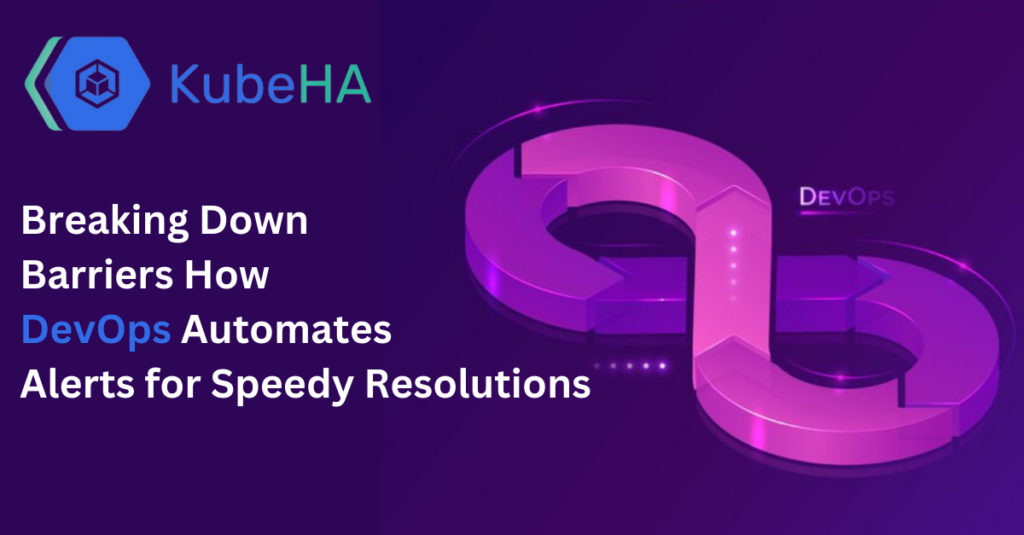
In software development and operations, the ability to swiftly identify and resolve issues is paramount. DevOps, with its emphasis on collaboration, automation, and continuous improvement, has revolutionized the way alerts are handled, enabling teams to respond to incidents with unparalleled speed and efficiency.
Understanding the Power of Automated Alerts
Real-Time Detection: DevOps leverages automated monitoring tools that continuously track system performance, application health, and infrastructure metrics. These tools are designed to detect anomalies, deviations from set thresholds, or potential issues in real time, triggering alerts instantaneously.
Eliminating Silos: With automated alerting systems, DevOps breaks down silos between development and operations teams. Alerts are communicated transparently across departments, fostering collaboration and ensuring that everyone is aware of potential issues, regardless of their specialization.
Precise Incident Identification: Automated alerts provide precise and targeted information about the nature and severity of an incident, allowing teams to swiftly understand the scope and impact. This clarity enables focused and efficient responses without wasting time on ambiguity.
The DevOps Approach to Alert Automation
Customized Alerting Rules: DevOps teams set up customized alerting rules tailored to their specific applications and infrastructure. These rules define thresholds, conditions, and escalation paths, ensuring that alerts are triggered only for critical issues and routed to the right individuals or teams.
Integration and Contextualization: Automated alerting systems integrate with various tools and platforms, providing contextual information along with alerts. This integration ensures that teams receive comprehensive insights into incidents, including relevant logs, metrics, and historical data, empowering them to make informed decisions quickly.
Continuous Iteration and Improvement: DevOps follows a culture of continuous improvement. Teams regularly review and refine alerting mechanisms based on incident postmortems and feedback, optimizing alert thresholds and response workflows for better accuracy and efficiency.
Benefits and Impact of Automated Alerts in DevOps
Reduced Mean Time to Resolution (MTTR): By automating alerting and incident response, DevOps significantly reduces MTTR. Swift identification, precise alerting, and streamlined responses minimize downtime and its associated impacts on operations.
Enhanced Operational Efficiency: Automated alerts eliminate manual monitoring efforts, allowing teams to focus on strategic tasks rather than continuously watching for issues. This efficiency boost contributes to smoother operations and improved productivity.
Improved Reliability and Customer Experience: Rapid incident identification and resolution translate to increased system reliability and a better end-user experience. By proactively addressing issues, DevOps ensures smoother service delivery.
Embracing the Future with Automated Alerts
DevOps’ ability to automate alerts represents a fundamental shift in how incidents are detected, communicated, and resolved. By leveraging sophisticated monitoring tools, customized alerting rules, and a commitment to continuous improvement, DevOps fosters a culture of proactive incident management. As organizations embrace this automated approach to alerts, they pave the way for faster resolutions, heightened operational efficiency, and a more reliable and resilient infrastructure, ultimately delivering enhanced value to both internal and external stakeholders. Follow KubeHA Linkedin Page KubeHA